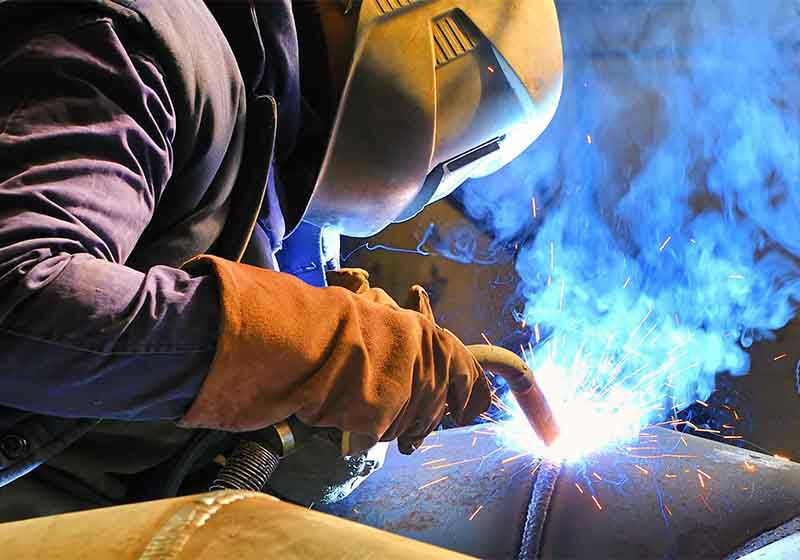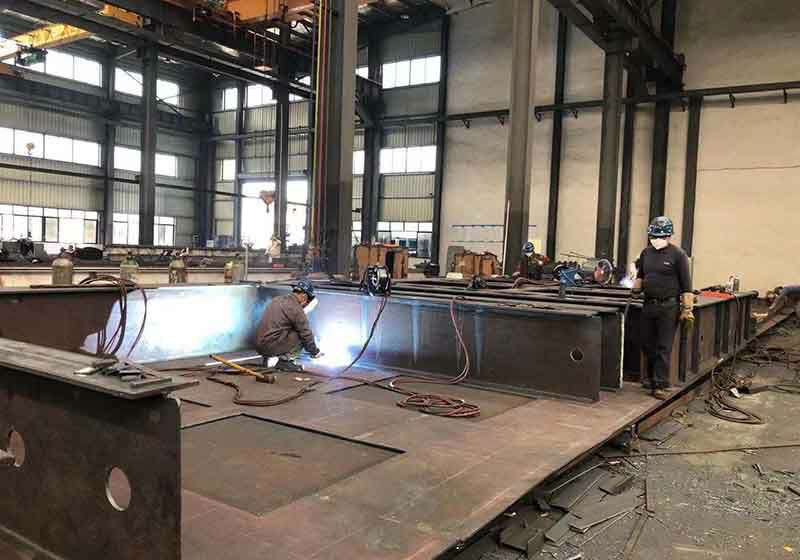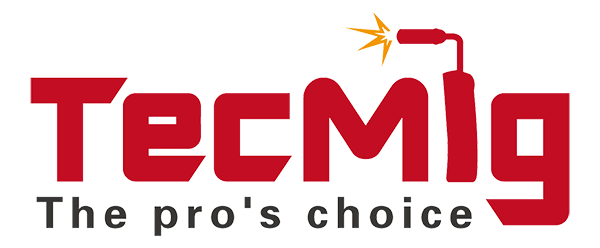Many welding applications require a welding procedure specification (WPS) — a document that provides direction on how to complete welds correctly and repeatedly. When written properly, a WPS helps takes the guesswork out of producing high-quality welds every time.
Even when a WPS isn’t required for a job, completing one can offer significant benefits for weld quality, time savings and the reduction of rework.
Writing a welding procedure — especially for the first time — may seem daunting, but it doesn’t have to be. Learn more about the benefits of using these documents and tips for writing a WPS.
When is a WPS needed?
A WPS may be required by the welding code being used for the job; this is common for structural and oil and gas welding, for example. For some manufacturers, a WPS may also be a customer request or requirement. Even when it’s not mandatory, having a WPS is a good practice to help ensure consistent welding performance and optimize productivity.
Welding Procedure Specification
A welding procedure specification (WPS) provides direction on how to
perform welds correctly and repeatedly. When written properly, a WPS
helps takes the guesswork out of producing high-quality welds every time.
The document outlines the parameters and processes to follow to create a quality weld for the specific joint design and application. For complex assemblies with different joint designs and weld types, multiple procedures may be required or beneficial. The detailed information often includes welding process, type and size of filler metal, welding pass sequences, preheat and interpass temperatures, wire feed speed, amperage and voltage. The more detailed the WPS, the better.

It also helps communicate expectations. Good welds can be made at low-productivity parameters or high-productivity parameters. To maximize the cost-effectiveness of the welding operation, the WPS can outline the parameters that deliver quality in addition to high productivity.
If a company has a lot of welder turnover, the details outlined in a WPS can help reduce training time and bring consistency no matter the welder’s skill level. Consistency in welding results in cost-effectiveness — the faster that welds are completed and the less rework involved, the more costs are reduced.
When a welding code includes prequalified procedures that will be followed, there is no requirement to write a WPS for that application. Prequalified procedures outline proven methods and parameters for specific welding applications — almost like a template for success. Only if the welder must deviate from the prequalified ranges would the procedure need to be requalified.
Welding
The detailed information in a WPS often
includes welding process, type and size of
filler metal, welding pass sequences,
preheat and interpass temperatures, wire
feed speed, amperage and voltage.
How do a PQR and WQR differ from a WPS?
Every time there is a WPS, there will also be a procedure qualification record (PQR), unless the application is using prequalified procedures. This document is just as important as the WPS, as it supports the welding procedures with testing results.
Chemical analysis and mechanical testing are the core results of PQR testing. All of the information detailed in the WPS — the combination of amps and voltage, pass sequences, filler metal, base materials and joint designs used to produce a weld — are tested to ensure they produce the necessary chemical and mechanical properties. Those results are then detailed in the PQR, which forms the basis for the ranges that will be provided for each variable in the WPS.
Put another way, the WPS details how a quality weld is produced, while the PQR shows the actual testing and results of completing welds with those specifications.
A welder qualification record (WQR) is another document that may or may not be included with a WPS. This record shows that a welder has tested and is qualified to make specific types of welds. It’s often required for certain codes, such as AWS D1.1 Structural Welding Code – Steel. Having a WQR is an indication that a welder can apply the welding procedure specification to produce high-quality welds.
How to write a WPS
Writing a WPS does require some research and experimentation to ensure the details being included are effective for the specific application. There are resources available help. When drafting a WPS, consider these three tips.
Determine the expectations of the welding to be performed. Are mechanical properties the most important driver? For example, is low-temperature toughness a requirement? If so, it may be wise to specify a filler metal tradename, rather than just the classification, on the welding procedure to ensure that requirements can be consistently met. If productivity is an important driver, take shop skill level into account. Outlining very tight control of welding variables is excellent for repeatability, but this introduces a level of difficulty to ensure conformance.
Do some homework. Refer to manufacturer recommendations, such as the data sheets for the welding filler metal to be used. These often indicate minimums and maximums of an acceptable operating range and can be used to develop good starting parameters. However, don’t rely on data sheet ranges alone, since a proper WPS requires testing the settings to ensure they work for the specific application and conditions. Consult a filler metal’s certificate of conformance, which will list the gas and parameters used, joint design and other factors. To write a good WPS, it’s also important to understand the nature of the process and the desired weld. This involves consideration of four issues:
Welding Material
Even when a WPS isn’t required for a job, completing one
can offer significant benefits for weld quality, time savings
and the reduction of rework.
Process vs. travel speed: Some processes allow higher travel speeds due to higher deposition rates — a metal-cored wire compared to a solid wire or a flux-cored wire compared to a stick electrode, for example. This may change the weld pass sequence.
Joint design vs. travel speed: It’s easy to “ride the puddle” and not get good penetration when there is a tight root opening with little bevel. Very narrow joints will require higher travel speeds to ensure good weld quality. A narrow joint design also affects the choice of wire diameter. A thicker wire provides higher deposition but may fill up the joint too fast and prevent proper fusion.
Welding position vs. travel speed: Typically, the operator must maintain a good travel speed when making a vertical up or overhead weld, as going too slow will cause the molten metal to drip. A high deposition filler metal such as metal-cored wire may not work best for vertical up-welding, since it lacks slag that supports the weld puddle and requires lowering the wire feed speed to maintain a proper weld puddle. Consider the welding position and necessary travel speed when choosing processes.
Material type vs. heat input: Certain materials require better control over heat input. For example, high-strength low-alloy steels often require tighter control of heat input and preheat/interpass temperatures. If heat input is too high or low, it can affect weld quality (example: hydrogen-induced cracking) or mechanical properties like tensile strength in the heat-affected zone.

Welding
Writing a WPS does require some research and testing to
ensure the details being included are effective for the
specific application. Filler metal data sheets or certificates
of conformance can be a good starting point for suggested
parameter ranges.
Do some lab work. First, it’s important to assess and ensure acceptable performance at the upper and lower ends of the range specified in the welding procedure. If performance is unacceptable, limit the range slightly. Next, work with the floor personnel to determine the best balance between productivity and the average welder skill level. This may require a time study. It’s also important to look at a weld cross-section to ensure that good fusion and a good bead profile are being obtained. An operator may be welding at a high deposition rate but not getting good root fusion or a good overall cross-section. Borderline root fusion may become lack of root fusion with minor modifications to welding parameters. Ensure that the WPS offers robust ranges and leaves no room for error.
Finishing touches when writing a WPS
In addition to the technical details and experimentation necessary to write a good WPS, it’s also important to follow some basic formatting guidelines to get the most out of the procedures.
Use a consistent format and flow, which makes locating information easier and can eliminate confusion when looking at different procedures. This is especially true when using multiple procedures on one component or project. Welding procedure specification examples and templates can be found in Annex N of AWS D1.1 or Annex O of AWS D1.5. ASME also offers a WPS template. Here are some examples: a sample WPS form for gas metal arc welding and flux-cored welding, a sample PQR form and a sample WQR form.
Another step that eliminates confusion is to detail pass sequence requirements. This helps welders estimate appropriate travel speeds, weave width and wire placement. Wire placement is not something typically described in a standard welding procedure specification template, but it can be an important factor for some automated applications. In these cases, noting wire placement and oscillation settings can be a significant timesaver if anything happens to the robot programming.
Writing and implementing an optimized welding procedure specification requires doing the leg work. Making this effort helps ensure welding operations are producing a WPS that is most effective for the specific application, which can reduce rework and downtime, shorten welder training time and lower overall costs.




